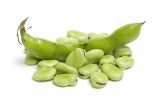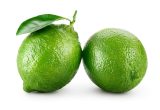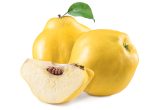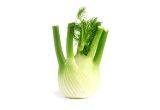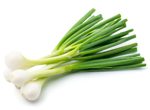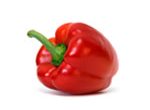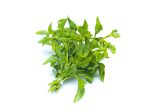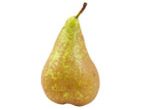Blackberry

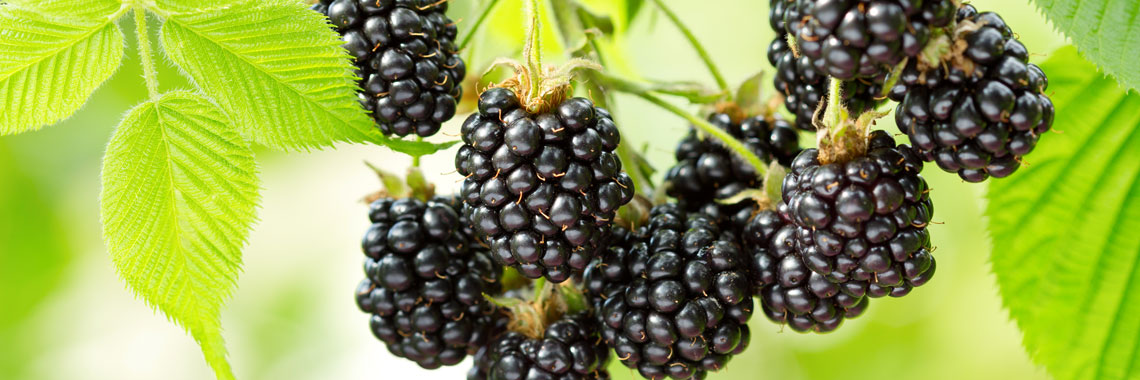
Description
- The blackberry (Rubus fructicosus) belongs to the Rosacaea family.
- Blackberries of the genus Rubus consist of a complex group that grows widely in the world, especially in the temperate regions of the Northern Hemisphere (Rocabado, 2008).
PHYSICAL AND ORGANOLEPTIC CHARACTERISTICS
- Anthocyanins, and mostly cyanidin-3-O-glucoside, are the pigments responsible for the colour of blackberries, which varies from purple-red to blue (Fernandes, 2018; Cefali, 2019).
- The profile of volatile substances is thought to evolve according to the ripening of blackberries:
- Before it is ripe, blackberry, of green colour, contains cis-3-hexene-1-ol, associated with the herbaceous and citrus aroma, and 2-heptanone.
- In the early stages of ripening, blackberry, which has become red in colour, contains acetic acid hexyl ester and 2-heptanol, associated with a bitter and fruity aroma.
- At the end of ripening, it is black and 2-heptanone and 2-octanone (related to the vegetable oil aroma) are believed to be responsible for the fresh fruit aroma (Padilla-Jimenez, 2019).
- Depending on geographical location, the aromatic composition varies slightly (Wang, 2005).
- There is reportedly a positive correlation between the presence of total phenolic compounds in blackberries and their acidic and astringent taste. In particular, procyanidins, ferulic acid and chlorogenic acid are thought to be responsible for the astringent taste (Pinto, 2018).
COMPOSITION CHARACTERISTICS (excluding macronutrients, vitamins and minerals)
- The phenolic profile of two blackberry cultivars, Loch Ness and Chester Thornless, was studied. Thirty abundant phenolic compounds were identified. The main ones were chlorogenic acid, caffeic acid, cinnamic acid, ferulic acid and ellagic acid (Pinto, 2018).
- Chlorogenic acid has several health benefits including antioxidant, antibacterial, hepato-protective, cardio-protective, anti-inflammatory, neuro-protective, anti-obesity, antiviral, antimicrobial and anti-hypertensive properties (Naveed, 2018).
- Similarly, caffeic acid, ferulic acid, cinnamic acid and ellagic acid exhibit antioxidant, anti-inflammatory and also anti-cancer properties (Adisakwattana, 2017; Habtemariam, 2017; Ríos, 2018; Zduńska, 2018).
- These fruits also contain flavonoids, including anthocyanins, which give them antioxidant properties. These compounds can protect the skin from ultraviolet rays, which cause oxidative damage responsible for skin ageing, by acting as a sunscreen (Cefali, 2019).
- Cyanidin-3-O-glucoside (anthocyanin) derivatives, with polyphenol the most abundant in blackberries, such as protocatechic acid, are thought to have anti-inflammatory, chemopreventive and neuroprotective effects (Robinson, 2020).
- In addition to flavonoids, blackberries also contain tannins, and mainly ellagitannins, which contribute to their antioxidant properties and, therefore, are thought to protect against cellular ageing and reduce the risk of cancer and cardiovascular disease (Pinto, 2018).
- However, the phytochemical composition and sensory profile of blackberries varies among cultivars (Pinto, 2018).
RAW
The following values are approximate and depend on variety, season, ripeness, cultivation conditions, etc. The blackberry provides on average 47.30 calories (kcal) per 100 g, i.e. 198 kJ. A portion of blackberries weighs an average of 140 g, giving an energy intake of 66.22 kcal.
COMPOSITION TABLES
For each nutrient, the tables provide information on the content, the minimum and maximum values, as well as the percentage of the Dietary Reference Values (DRVs) for 100 g net of raw blackberries.
MACRONUTRIENTS
| Constituent (g) | Average content |
Min-Max per 100g |
DRV% |
|---|---|---|---|
| Water | 86,1 | 85,50 - 91,90 | - |
| Fibers | 5,20 | 2,30 - 6,70 | - |
| Carbohydrates | 6,53 | 0 - NC | 2,51 |
| Sugars | 6,10 | 3,04 - 6,40 | 6,78 |
| Lipids | 0,70 | 0,37 - 1 | 1 |
| Saturated fat | 0,07 | 0,014 - NC | 0,35 |
| Protein | 1,13 | 1,10 - 1,64 | 2,26 |
| Constituent (g) | Amount | Min-Max | DRV% |
|---|---|---|---|
| Water | Ciqual 2020 (valeur issue des analyses Ciqual-Aprifel 2018) | - | - |
| Fibers | Ciqual 2020 (valeur issue des analyses Ciqual-Aprifel 2018) | - | - |
| Carbohydrates | Ciqual 2020 | - | Règlement (UE) N°1169/2011 du parlement Européen et du conseil du 25 octobre 2011 |
| Sugars | Ciqual 2020 (valeur issue des analyses Ciqual-Aprifel 2018) | - | Règlement (UE) N°1169/2011 du parlement Européen et du conseil du 25 octobre 2011 |
| Lipids | Ciqual 2020 (valeur issue des analyses Ciqual-Aprifel 2018) | - | Règlement (UE) N°1169/2011 du parlement Européen et du conseil du 25 octobre 2011 |
| Saturated fat | Ciqual 2020 (valeur issue des analyses Ciqual-Aprifel 2018) | - | Règlement (UE) N°1169/2011 du parlement Européen et du conseil du 25 octobre 2011 |
| Protein | Ciqual 2020 (valeur issue des analyses Ciqual-Aprifel 2018) | - | Règlement (UE) N°1169/2011 du parlement Européen et du conseil du 25 octobre 2011 |
Zoom on carbohydrates
- However, the blackberry provides less carbohydrates (6.53 g per 100 g) than the average for this macronutrient in fresh fruits (11.31 g per 100 g)
- These are mainly fructose (3.08 g per 100 g), glucose (2.99 g per 100 g) and galactose (0.03 g per 100 g).
Zoom on fibres
- Blackberry is a source of fibre*, providing more than 3 g per 100 g of fruit, i.e. 5.20 g per 100 g.
- It provides more fibre than the average for fresh fruit (2.77 g per 100 g).
- According to the data of the Ciqual 2020 table, the blackberry is one of the fruits that contains the most fibre.
Zoom on proteins
- The amount of protein in blackberries (1.13 g per 100 g) is higher than the average quantity of protein in fresh fruit (0.93 g per 100 g).
Zoom on lipids
- The amount of fat in blackberries (0.70 g per 100 g) is higher than the average amount of fat in fresh fruits (0.56 g per 100 g). With less than 3 g of fat per 100 g, blackberries are low in fat*.
* Regulation (EC) No 1924/2006 of the European Parliament and of the Council of 20 December 2006 on nutrition and health claims made on foods.
MINERALS AND TRACE ELEMENTS
| Constituent | Average content |
Min-Max per 100g |
DRV% |
|---|---|---|---|
| Calcium (mg) | 31 | 14 - 44 | 3,88 |
| Chloride (mg) | < 20 | - | - |
| Copper (mg) | 0,07 | 0,038 - 0,26 | 7 |
| Iron (mg) | 0,40 | 0,33 - 0,78 | 2,86 |
| Iodine (µg) | < 20 | 0,25 - NC | - |
| Magnesium (mg) | 20 | 19 - 25,90 | 5,33 |
| Manganese (mg) | 1,10 | - | 55 |
| Phosphorus (mg) | 25 | 15 - 44,50 | 3,57 |
| Potassium (mg) | 200 | 159 - 330 | 10 |
| Selenium (µg) | < 20 | 0,10 - NC | - |
| Sodium (mg) | < 5 | 1 - NC | - |
| Zinc (mg) | 0,18 | NC - 0,64 | 1,80 |
| Constituent | Amount | Min-Max | DRV% |
|---|---|---|---|
| Calcium (mg) | Ciqual 2020 (valeur issue des analyses Ciqual-Aprifel 2018) | - | Règlement (UE) N°1169/2011 du parlement Européen et du conseil du 25 octobre 2011 |
| Chloride (mg) | Ciqual 2020 (valeur issue des analyses Ciqual-Aprifel 2018) | - | Règlement (UE) N°1169/2011 du parlement Européen et du conseil du 25 octobre 2011 |
| Copper (mg) | Ciqual 2020 (valeur issue des analyses Ciqual-Aprifel 2018) | - | Règlement (UE) N°1169/2011 du parlement Européen et du conseil du 25 octobre 2011 |
| Iron (mg) | Ciqual 2020 (valeur issue des analyses Ciqual-Aprifel 2018) | - | Règlement (UE) N°1169/2011 du parlement Européen et du conseil du 25 octobre 2011 |
| Iodine (µg) | Ciqual 2020 (valeur issue des analyses Ciqual-Aprifel 2018) | - | Règlement (UE) N°1169/2011 du parlement Européen et du conseil du 25 octobre 2011 |
| Magnesium (mg) | Ciqual 2020 (valeur issue des analyses Ciqual-Aprifel 2018) | - | Règlement (UE) N°1169/2011 du parlement Européen et du conseil du 25 octobre 2011 |
| Manganese (mg) | Ciqual 2020 (valeur issue des analyses Ciqual-Aprifel 2018) | - | Règlement (UE) N°1169/2011 du parlement Européen et du conseil du 25 octobre 2011 |
| Phosphorus (mg) | Ciqual 2020 (valeur issue des analyses Ciqual-Aprifel 2018) | - | Règlement (UE) N°1169/2011 du parlement Européen et du conseil du 25 octobre 2011 |
| Potassium (mg) | Ciqual 2020 (valeur issue des analyses Ciqual-Aprifel 2018) | - | Règlement (UE) N°1169/2011 du parlement Européen et du conseil du 25 octobre 2011 |
| Selenium (µg) | Ciqual 2020 (valeur issue des analyses Ciqual-Aprifel 2018) | - | Règlement (UE) N°1169/2011 du parlement Européen et du conseil du 25 octobre 2011 |
| Sodium (mg) | Ciqual 2020 (valeur issue des analyses Ciqual-Aprifel 2018) | - | - |
| Zinc (mg) | Ciqual 2020 (valeur issue des analyses Ciqual-Aprifel 2018) | - | Règlement (UE) N°1169/2011 du parlement Européen et du conseil du 25 octobre 2011 |
Zoom on minerals and trace elements
- Blackberry is high in manganese as it provides the equivalent of 55% of DRVs, i.e. 1.10 mg per 100 g. According to the data of the Ciqual 2020 table, the blackberry is, together with the black mulberry, the fruit that contains the most manganese.
- It provides a significant amount of potassium, equivalent to 10% of DRVs, i.e. 200 mg per 100 g.
The quantity of other minerals and trace elements represents less than 8% of DRVs.
VITAMINS
| Constituent | Average content |
Min-Max per 100g |
DRV% |
|---|---|---|---|
| Provitamin A Beta-carotene (µg) | 156 | 40 - 204 | - |
| Vitamin A equivalent (µg) | 26 | 6,67 - 34 | 3,25 |
| Vitamin B1 (mg) | < 0,015 | NC - 0,028 | - |
| Vitamin B2 (mg) | 0,02 | NC - 0,052 | 1,43 |
| Vitamin B3 (mg) | 0,33 | NC - 0,74 | 2,06 |
| Vitamin B5 (mg) | 0,31 | 0,22 - 0,35 | 5,17 |
| Vitamin B6 (mg) | 0,015 | NC - 0,057 | 1,07 |
| Vitamin B9 (µg) | 17 | NC - 31 | 8,50 |
| Vitamin C (mg) | 10,10 | NC - 21 | 12,63 |
| Vitamin E (mg) | 1,28 | 0,56 - 5,50 | 10,67 |
| Vitamin K1 (µg) | 14,10 | NC - 25,10 | 18,80 |
| Constituent | Amount | Min-Max | DRV% |
|---|---|---|---|
| Provitamin A Beta-carotene (µg) | Ciqual 2020 (valeur issue des analyses Ciqual-Aprifel 2018) | - | - |
| Vitamin A equivalent (µg) | Calcul à partir de la valeur Provitamine A Béta-carotène* | - | Règlement (UE) N°1169/2011 du parlement Européen et du conseil du 25 octobre 2011 |
| Vitamin B1 (mg) | Ciqual 2020 (valeur issue des analyses Ciqual-Aprifel 2018) | - | Règlement (UE) N°1169/2011 du parlement Européen et du conseil du 25 octobre 2011 |
| Vitamin B2 (mg) | Ciqual 2020 (valeur issue des analyses Ciqual-Aprifel 2018) | - | Règlement (UE) N°1169/2011 du parlement Européen et du conseil du 25 octobre 2011 |
| Vitamin B3 (mg) | Ciqual 2020 (valeur issue des analyses Ciqual-Aprifel 2018) | - | Règlement (UE) N°1169/2011 du parlement Européen et du conseil du 25 octobre 2011 |
| Vitamin B5 (mg) | Ciqual 2020 (valeur issue des analyses Ciqual-Aprifel 2018) | - | Règlement (UE) N°1169/2011 du parlement Européen et du conseil du 25 octobre 2011 |
| Vitamin B6 (mg) | Ciqual 2020 (valeur issue des analyses Ciqual-Aprifel 2018) | - | Règlement (UE) N°1169/2011 du parlement Européen et du conseil du 25 octobre 2011 |
| Vitamin B9 (µg) | Ciqual 2020 (valeur issue des analyses Ciqual-Aprifel 2018) | - | Règlement (UE) N°1169/2011 du parlement Européen et du conseil du 25 octobre 2011 |
| Vitamin C (mg) | Ciqual 2020 (valeur issue des analyses Ciqual-Aprifel 2018) | - | Règlement (UE) N°1169/2011 du parlement Européen et du conseil du 25 octobre 2011 |
| Vitamin E (mg) | Ciqual 2020 | - | Règlement (UE) N°1169/2011 du parlement Européen et du conseil du 25 octobre 2011 |
| Vitamin K1 (µg) | Ciqual 2020 (valeur issue des analyses Ciqual-Aprifel 2018) | - | Règlement (UE) N°1169/2011 du parlement Européen et du conseil du 25 octobre 2011 |
Zoom on vitamins
- The blackberry is a source of vitamin K1 as it brings the equivalent of 18.80% of DRVs, i.e. 14.10 µg per 100 g. Moreover, the blackberry is one of the fruits that contains the most vitamin K1 according to the data of the Ciqual 2020 table.
- The blackberry also brings notable quantities of vitamin C and vitamin E as it provides the equivalent of:
- 12.63% of DRVs for vitamin C, i.e. 10.10 mg per 100 g;
- 10.67% of DRVs for vitamin E, i.e. 1.28 mg per 100 g. According to the data of the Ciqual 2020 table, the blackberry is the 4th fruit containing the most vitamin E, after blackcurrant, mango and mirabelle plum.
- The amount of other vitamins represents less than 9% of DRVs.
*Calculation made: Beta-Carotene / 6 + retinol
POLYPHENOLS
| Constituent (mg) | Average content |
Min-Max per 100mg |
|---|---|---|
| Flavonoids (mg) | 199,23 | 103,77 - 315 |
| of which Flavonols (mg) | 12,77 | 1,82 - 47,17 |
| of which Flavanols (mg) | 13,87 | 4,85 - 20,75 |
| of which Anthocyanins (mg) | 172,59 | 97,10 - 247,08 |
| Phenolic Acids (mg) | 57,44 | 28,60 - 90,20 |
| of which Hydroxybenzoic acids (mg) | 50,17 | 22,90 - 81 |
| of which Hydroxycinnamic acids (mg) | 7,27 | 5,70 - 9,20 |
| Total polyphenols | 256,67 | 132,37 - 405,20 |
| Constituent (mg) | Amount | Min-Max |
|---|---|---|
| Flavonoids | Phénol-Explorer version 3.6-Méthode utilisée : Chromatographie | - |
| of which Flavonols | Phénol-Explorer version 3.6-Méthode utilisée : Chromatographie | - |
| of which Flavanols | Phénol-Explorer version 3.6-Méthode utilisée : Chromatographie | - |
| of which Anthocyanins | Phénol-Explorer version 3.6-Méthode utilisée : Chromatographie | - |
| Phenolic Acids | Phénol-Explorer version 3.6-Méthode utilisée : Chromatographie | - |
| of which Hydroxybenzoic acids | Phénol-Explorer version 3.6-Méthode utilisée : Chromatographie | - |
| of which Hydroxycinnamic acids | Phénol-Explorer version 3.6-Méthode utilisée : Chromatographie | - |
| Total polyphenols | Phénol-Explorer version 3.6-Méthode utilisée : Chromatographie | - |
Zoom on polyphenols
- Polyphenols are substances with an antioxidant effect.
- The blackberry contains a significant amount of polyphenols.
- Anthocyanins, part of flavonoids, are predominantly present in blackberry composites, representing 67.24% of total polyphenols identified.
- Next come hydroxybenzoic acids (19.55% of total polyphenols), belonging to the phenolic acid family.
- The other polyphenols (flavanols, flavonols and hydroxycinnamic acids) each represent less than 6% of total polyphenols.
Nutrition and health claims
According to the definitions of nutrition claims as presented in Regulation (EC) No 1924/2006 on nutrition and health claims, and in view of the composition of blackberries, the following claims may be used:
NUTRITION CLAIMS OF BLACKBERRIES
- High in manganese (100 g of blackberries provide more than 30% of DRVs)
- Source of fibre (100 g of blackberries provide more than 3 g of fibre)
- Source of vitamin K1 (100 g of blackberries provide more than 15% of DRVs)
- Low in fat (100 g of blackberries provide less than 3 g of fat).
HEALTH CLAIMS (for a consumption of 100 g of blackberries)
Manganese
- Manganese contributes to:
- normal energy-yielding metabolism,
- maintenance of normal bones,
- normal formation of connective tissues,
- protection of cells from oxidative stress.
Vitamin K1
- Vitamin K1 contributes to:
- maintenance of normal bones,
- normal blood clotting.
References
- Adisakwattana S. Cinnamic Acid and Its Derivatives: Mechanisms for Prevention and Management of Diabetes and Its Complications. Nutrients. 2017;9(2):163.
- Agence nationale de sécurité sanitaire de l’alimentation, de l’environnement et du travail. Table de composition nutritionnelle des aliments Ciqual 2020. Consultée le 26/08/2020 depuis le site internet Ciqual https://ciqual.anses.fr/
- Cefali LC, Franco JG, Nicolini GF, Ataide JA, Mazzola PG. In vitro antioxidant activity and solar protection factor of blackberry and raspberry extracts in topical formulation. Journal of Cosmetic Dermatology. 2019;18(2):539–44.
- Fernandes A, Rocha MAA, Santos LMNBF, Brás J, Oliveira J, Mateus N, et al. Blackberryanthocyanins: β-Cyclodextrin fortification for thermal and gastrointestinal stabilization. Food Chemistry. 2018;245: 426–31.
- Habtemariam S. Protective Effects of Caffeic Acid and the Alzheimer’s Brain: An Update. Mini Reviews in Medicinal Chemistry. 2017;17(8): 667–74.
- Naveed M, Hejazi V, Abbas M, Kamboh AA, Khan GJ, Shumzaid M, et al. Chlorogenic acid (CGA): A pharmacological review and call for further research. Biomedicine & Pharmacotherapy. 2018;97: 67–74.
- Neveu V, Perez-Jiménez J, Vos F, Crespy V, du Chaffaut L, Mennen L, Knox C, Eisner R, Cruz J, Wishart D, Scalbert A. (2010) Phenol-Explorer: an online comprehensive database on polyphenol contents in foods. Database, doi: 10.1093/database/bap024. Full text (free access)
- Padilla-Jimenez SM, Angoa-Pérez MV, Mena-Violante HG, Oyoque-Salcedo G, Renteria-Ortega M, Oregel-Zamudio E. Changes in the Aroma of Organic Blackberries (Rubus Fruticosus) During Ripeness. Analytical Chemistry Letters. 2019;9(1): 64–73.
- Pinto T, Vilela A, Pinto A, Nunes FM, Cosme F, Anjos R. Influence of cultivar and of conventional and organic agricultural practices on phenolic and sensory profile of blackberries (Rubus fruticosus). Journal of the Science of Food and Agriculture. 2018;98(12): 4616–24.
- Règlement (CE) N° 1924/2006 du Parlement européen et du Conseil du 20 décembre 2006 concernant les allégations nutritionnelles et de santé portant sur les denrées alimentaires.
- Règlement (UE) N°432/2012 de la Commission du 16 mai 2012 établissant une liste des allégations de santé autorisées portant sur les denrées alimentaires, autres que celles faisant référence à la réduction du risque de maladie ainsi qu’au développement et à la santé infantiles.
- Règlement (UE) n°1169/2011 du Parlement européen et du Conseil du 25 octobre 2011 concernant l’information des consommateurs sur les denrées alimentaires, modifiant les règlements (CE) n°1924/2006 et (CE) n°1925/2006 du Parlement européen et de Conseil et abrogeant la directive 87/250/CEE de la Commission, la directive 90/496/CEE du Conseil, la directive 1999/10/CE de la Commission, la directive 200/13/CE du Parlement européen et du Conseil, les directives 2002/67/CE et 2008/5/CE de la Commission et le règlement (CE) n°608/2004 de la Commission.
- Ríos J-L, Giner RM, Marín M, Recio MC. A Pharmacological Update of Ellagic Acid. Planta Medica. 2018;84(15): 1068–93.
- Robinson JA, Bierwirth JE, Greenspan P, Pegg RB. Blackberry polyphenols: Composition, quantity, and health impacts from in vitro and in vivo studies. Journal of Food Bioactives. 2020;9: 2–31.
- Rocabado GO, Bedoya LM, Abad MJ, Bermejo P. Rubus – A review of its phytochemical and pharmacological profile. Natural product communications. 2008; 3(3):423-36.
- Wang Y, Finn C, Qian MC. Impact of growing environment on chickasaw blackberry (Rubus L.) aroma evaluated by gas chromatography olfactometry dilution analysis. J Agric Food Chem. 2005;53(9):3563-71.
- Zduńska K, Dana A, Kolodziejczak A, Rotsztejn H. Antioxidant Properties of Ferulic Acid and Its Possible Application. Skin Pharmacology and Physiology. 2018;31(6): 332–6.





